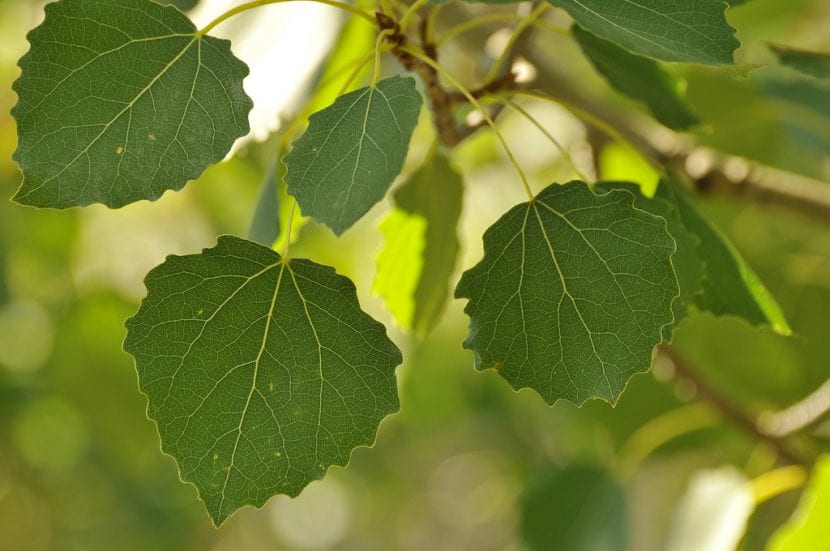
Poplar is a tree that, due to its rapid growth and high ornamental value, widely used to create tall hedges, as well as as an isolated specimen. And, if this were not enough, its cultivation and maintenance is very simple, suitable for beginners.
If you want to have a garden with a primitive plant that is easy, do not hesitate: poplar is your best option. Why? For everything that I am going to tell you next.
Origin and characteristics of the poplar
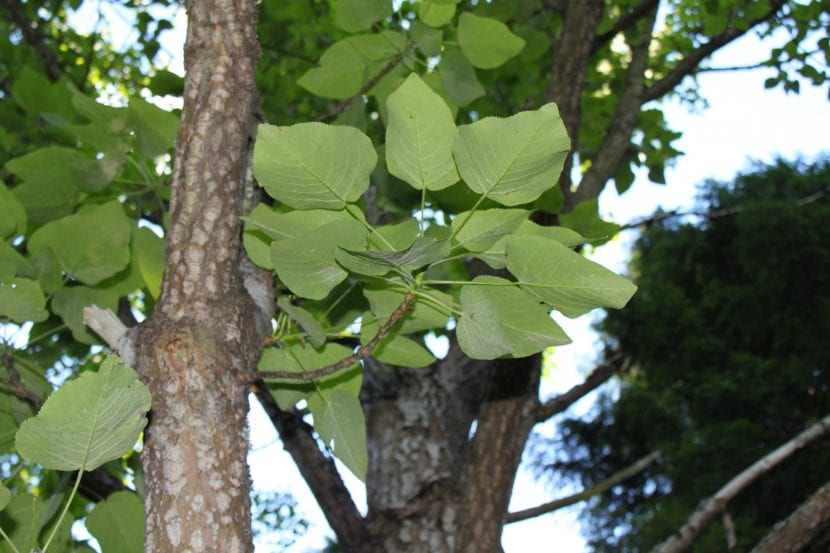
Populus wilsonii
Our protagonist is a deciduous tree native to the temperate regions of the northern hemisphere. It was introduced in the temperate climate zones of the southern hemisphere. Known as poplar or poplar, it first appeared in the Lower Cretaceous, that is, sometime between 145 and 66,4 million years ago, which means that it lived with dinosaurs, hence it is considered a primitive plant .
It belongs to the botanical genus Populus, which is composed of about 40 species made up of simple, alternate leaves, with serrated, serrated, lobed or scalloped margins, usually green in color. The flowers are grouped in hanging inflorescences, and the fruit is a capsule of brown color when it matures inside which we find many small seeds provided with white vilano.
The trunk is straight and thin, and can reach 10-30 meters. The appearance is therefore usually that of a pillar with a narrow crown, making it a very interesting plant to create protection hedges.
Main species
the white
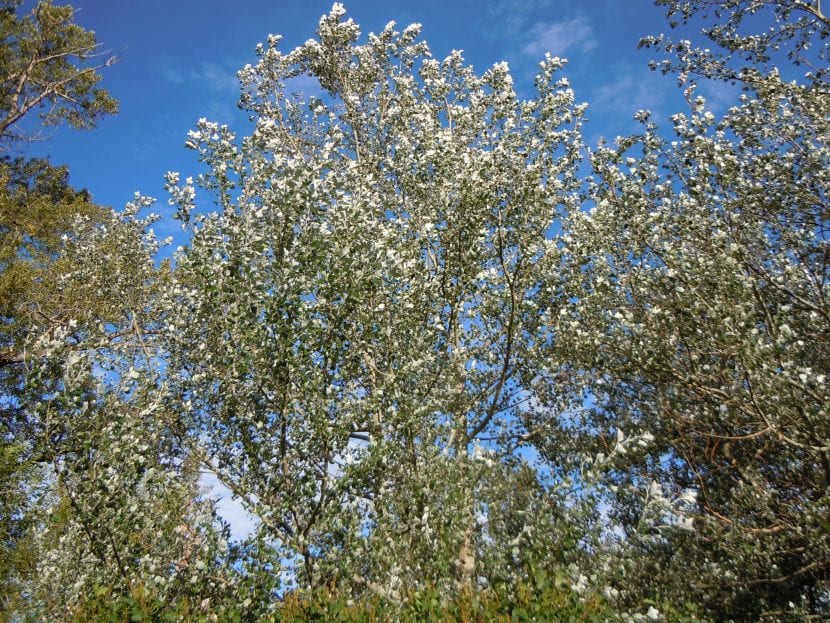
Known as the white poplar, common poplar, silver poplar, Afghan poplar or white poplar it is native to Europe, Asia and North Africa. Reaches a height of up to 30 meters.
the Alder
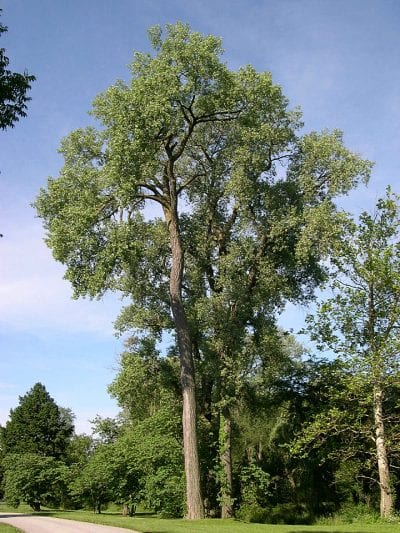
Known as the black poplar of North America, it can live between 70 and 100 years. Reaches a height of 15 to 20 meters.
populus

Known as the aspen, aspen or lamppost, it is a tree native to temperate regions of Europe and Asia that reaches a height of up to 25 meters.
black people
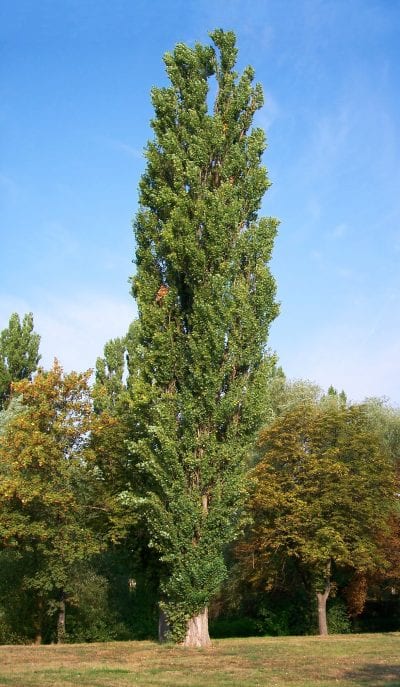
Known as the black poplar, it is native to southern, central, and eastern Europe (including Spain), central and western Asia, and North Africa. Reaches a height of 20 to 30 meters.
What care do you need?
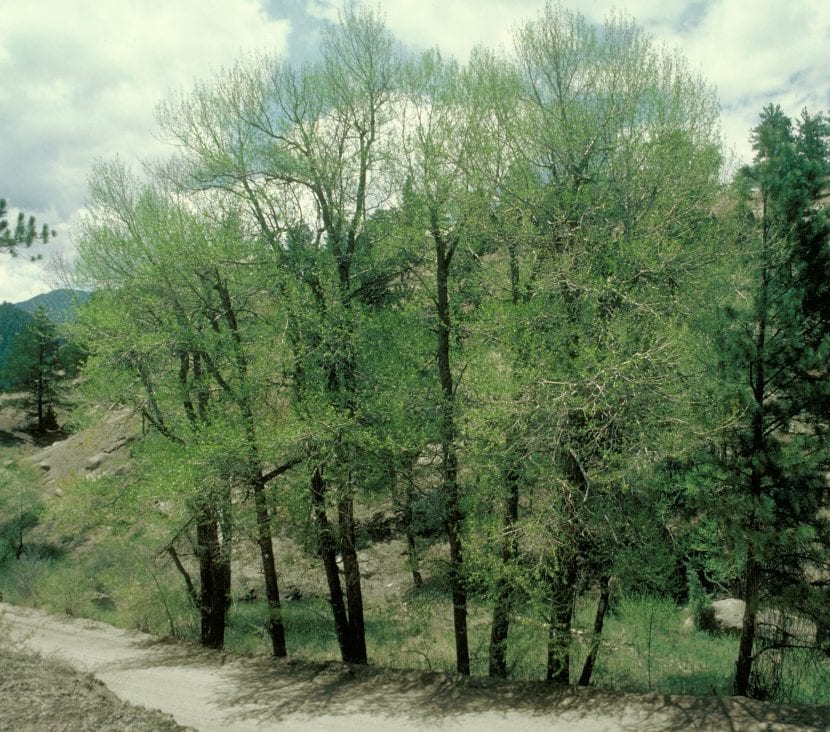
the angustijolia
If you want to get a copy, we recommend providing the following care:
Location
The poplar is a tree that it must be placed outside, in full sun. Its root system is very invasive, so it is important to plant it at a minimum distance of 6 meters from pipes, paved soils, etc.
Irrigation
In its natural habitat it grows near waterways, so we will have no choice but to water it very often 🙂. The frequency of irrigation will vary depending on our area and the climate we have, but generally you have to water every 2-3 days in summer and every 4-5 days the rest of the year.
Land
It grows in all types of soils, but it has a preference for those that are slightly acidic and with good drainage.
Subscriber
From early spring to late summer we must pay it with Organic fertilizers such as guano or manure. We can also add past vegetables, egg and banana shells or tea bags.
Planting time
The best time to spend it in the garden is in spring, when the risk of frost has passed.
Multiplication
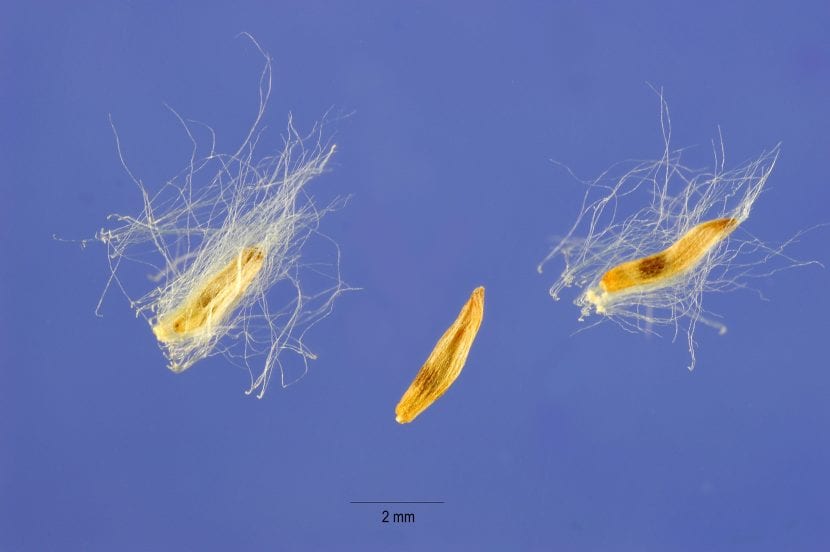
Seeds
If we have the opportunity to collect freshly fallen seeds from the tree in autumn, We can get them to germinate in the following way:
- The first thing we will do is remove the tuft of hair carefully.
- Afterwards, we fill a seedbed with universal cultivation substrate mixed with 30% perlite or river sand.
- Then, we place the seeds so that they are a little separated from each other. It is important not to put many in the same seedbed to avoid problems in the future.
- Next, sprinkle with copper or sulfur to prevent fungus.
- Finally, they are covered with a thin layer of substrate and watered.
The first will germinate in spring, as soon as temperatures rise above 15 degrees Celsius.
Cuttings
A faster and more efficient way to get new specimens is multiplying it by cuttings late winter. To do this, what we will do is cut a branch of about 40 centimeters, impregnate the base with powdered rooting hormones and finally plant it in a pot with vermiculite that we will keep moist. If all goes well, it will root after a month.
New shoots
Also called suckers, they are "offspring" that sprout around the base of the trunk. We can separate them at the end of winter by digging small trenches 30cm deep with the help of a hoe.. Later, we plant them in pots with vermiculite in semi-shade until we see them growing.
Pests
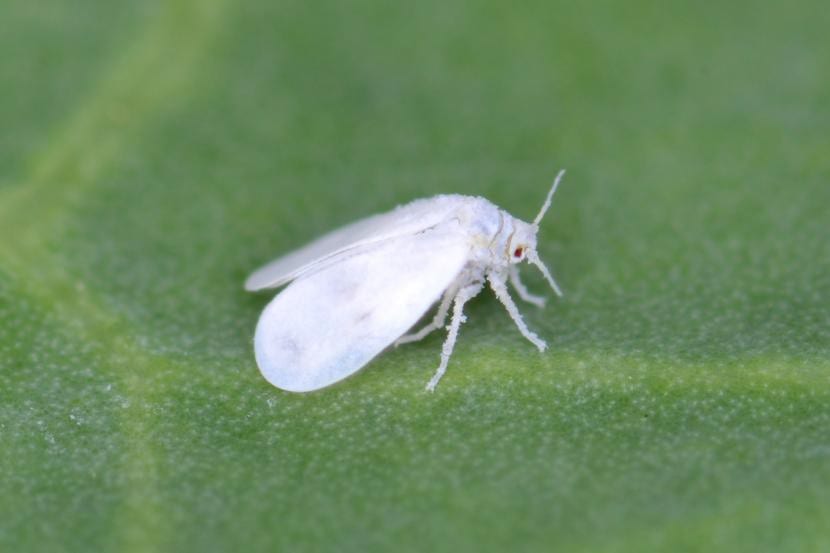
It can be affected by:
- White fly: they are small white flying insects that settle on the leaves, on which they feed. It can be controlled with sticky yellow traps.
- Saperda or poplar borer: it is a greenish beetle whose larvae make galleries in branches and trunks. It can be fought with Delmatrin 2,5%.
Management
Can have powdery mildew, which is a parasitic fungus that is manifested by the appearance of a whitish or grayish powder on the leaves. It is fought with copper-based fungicides.
Pruning
Whenever necessary, can be pruned in late winter removing dry, diseased or weak branches and those that have grown too much.
Rusticity
Withstands frost up to -17 degrees centigrade.
What is poplar used for?
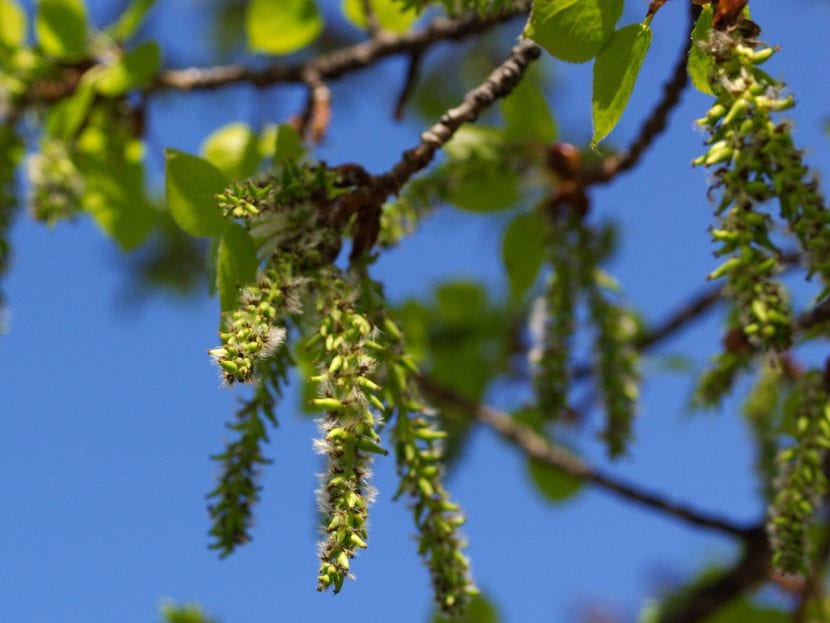
Ornamental
It is a tree widely used in gardening for its decorative value, since can be as an isolated specimen or in alignments. In addition, it provides a pleasant shade and can be used to prevent landslides typical of wet areas.
Wood
The wood is used to make packaging, plywood, matches, pulp, flooring, carpentry, etc.
What did you think of the poplar? Although it has a very strong root system, it is a tree that, planted in a large garden, will give you a lot of satisfaction. Enjoy it 🙂.
I loved the whole analysis, very very complete I read it in full since where I live «Catalan Pyrenees» is full of Alamo! I see them daily and I have a lot of affection for them, seeing them in their natural state is very beautiful
Hello Antonio.
Thanks for your words.
We agree with you: poplars are impressive trees 🙂
Regards!
I would like to know the limitations that the Black Poplar planted more than twenty years ago currently has, in relation to the distance that it is in a private garden, with a building after a public road in between.
Thank you very much.
Hi Luis.
In order to answer you, I need to know how far the black poplar is from the garden. Suppose he is about 10 meters away, then it would not cause problems and he could continue to grow normally.
But if it is at less, at 5 for example, if a pipe passes nearby, it could break it.
Regards!